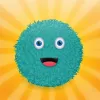Take a look inside 5 images
Kodable
Pros: Visual instructions and step-by-step levels help kids explore programming concepts even before they learn to read.
Cons: A teacher's biggest challenge may be finding the time for students to discover all there is to learn and do.
Bottom Line: A fun way for young students to understand coding, and an impressive resource for teachers to support their progress.
Kodable is a great tool for teaching coding to kids, and it's an exceptional resource for helping teachers learn about coding. Start by creating a free account and taking a spin through the extensive teacher resources. It has lots of information to help teachers develop their own knowledge and skills about coding and find ways to integrate coding activities into ELA, math, and even digital citizenship lessons. There are also lesson plans for integrating Kodable into an Hour of Code-style lesson. The teacher dashboard makes it easy to track student progress, unlock difficult levels, and even log in as a student to help with a particularly tricky puzzle. Students can access their account from devices or the web using their student code, so they can easily work on shared devices or in a 1-to-1 setting.
Consider using Kodable to help kids develop their logical thinking skills and work through problems step by step. This sort of procedural literacy gives kids a taste of what coding is all about and helps lay the foundation for later computer-programming learning. And it's a great way to help students develop deliberate, purposeful problem-solving skills that apply to any subject. Also, check which subscription plan suits you best. The free version includes a resource center for teachers and a limited amount of game content; the premium subscription includes more progress tracking tools and lesson plans, and its high price is likely best suited to a school- or district-level purchase.
Kodable introduces kids to key concepts in computer programming through a series of games designed to grow with them from kindergarten to fifth grade. The games are set in outer space, and students advance through the levels by learning programming concepts as they play. Skills start with sequencing and advance to loops, conditions, functions, and variables and into object-oriented programming concepts like properties and classes.
The teacher curriculum includes videos to introduce the concepts and step-by-step lesson plans, including vocabulary and off-screen activities, that teach the concepts (and perhaps introduce them to teachers) before students explore them through the on-screen games. Students can work at their own pace, replaying levels as necessary. In addition to the app, Kodable can be played online through a web browser, and there are offline activities available, too.
Overall, this is a stellar tool for introducing kids -- and their teachers -- to coding. Content-wise, Kodable is similar to other introductory programming logic apps like Move the Turtle and My Robot Friend, teaching sequencing and concepts like conditional clauses and functions. But the built-in curriculum and teacher dashboard make Kodable stand apart as a remarkable choice for early computer science study.
Teachers may worry about how they can teach a concept like computer programming if they don't have a strong background in the subject. Fortunately, the Kodable curriculum is a terrific on-ramp for building teachers' knowledge about coding so that they can most effectively support their students. You'll learn the lingo along with the kids if you don't already know it. Remember, kids aren't learning to write code just yet, but they can get a glimpse of what it looks like as they play and as they develop the logic and problem-solving skills necessary to succeed as programmers -- skills that will serve them well everywhere.














